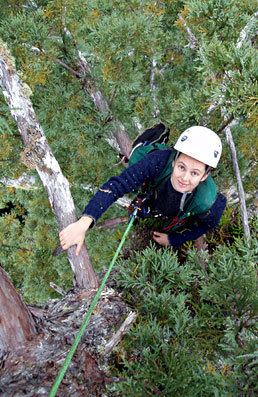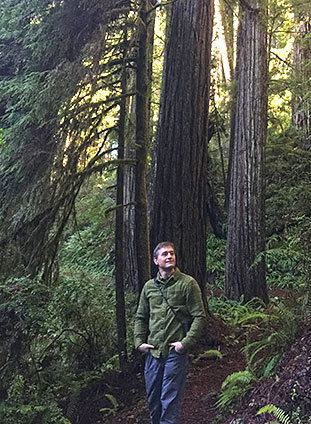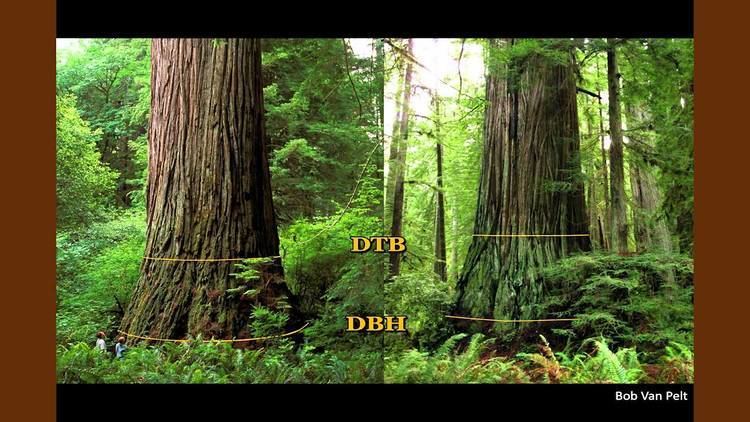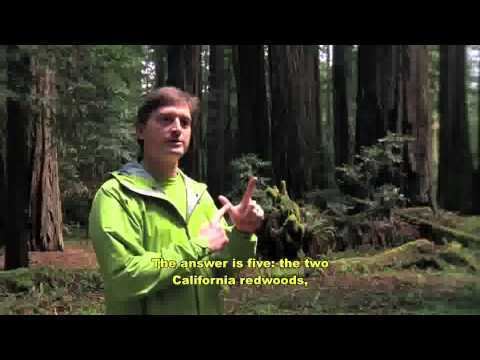Name Stephen Sillett | ||
 | ||
Movies National Geographic: Climbing Redwood Giants Education | ||
Stephen C. Sillett (born March 19, 1968) is an American botanist specializing in old growth forest canopies. As the first scientist to enter the redwood forest canopy, he pioneered new methods for climbing, exploring, and studying tall trees. Sillett has climbed many of the world’s tallest trees to study the plant and animal life residing in their crowns and is generally recognized as an authority on tall trees, especially redwoods (Sequoia sempervirens). He is the first Kenneth L. Fisher Chair in Redwood Forest Ecology for the Department of Biological Sciences at Humboldt State University. He is featured in Richard Preston's New York Times best seller The Wild Trees, as well as in academic journals, general interest magazines, and nature television programs. He lives in Arcata, California, with wife Marie Antoine, a botanist and fellow forest canopy research scientist.
Contents
- Early and personal life
- Education
- Early research
- Later research
- Major accomplishments
- Awards and affiliations
- Recent publications
- Additional reading
- References

Early and personal life

Sillett was born March 19, 1968 in Harrisburg, Pennsylvania. He has a younger sister, Liana, and an older brother, Scott, who is also featured in The Wild Trees. Both Sillett brothers were inspired to pursue careers in science by their grandmother, Helen Poe Sillett, who was a bird enthusiast.

His wife, Marie E. Antoine, a fellow botanist, lectures at Humboldt State University and assists Sillett in his field research. They were married on December 8, 2001.
Education

Sillett studied biology as an undergraduate to pursue his interest in botany, later refocusing on tall trees and Lobaria, a type of nitrogen-fixing lichen associated with old-growth forests, in the Pacific Northwest. He received his Bachelor of Arts from Reed College in Portland, Oregon, in 1989 at the age of 21. He went on to receive a Master of Science in Botany from the University of Florida in 1991, and a Doctor of Philosophy from Oregon State University in 1995. He began teaching at Humboldt State University in 1996, where he dedicates much of his time to field study of not only coast redwood but also giant sequoia (Sequoiadendron giganteum), Douglas-fir (Pseudotsuga menziesii), Sitka spruce (Picea sitchensis), and the tallest trees of the Southern Hemisphere, Eucalyptus regnans and E. globulus. He currently teaches courses in General Botany, Lichens and Bryophytes, and Forest Canopy Ecology at Humboldt State University.
Early research

Sillett began climbing Douglas-fir trees during his undergraduate years at Reed College. While working on his Masters, he studied a cloud forest canopy in Costa Rica, focusing on bryophytes inhabiting the emergent crowns of Strangler Figs (Ficus tuerckheimii). His doctorate work focused on old-growth Douglas-fir forests in the Cascade Mountains of western Oregon. It was not until he began teaching at Humboldt State that he began climbing and studying redwood forests.
Later research
After moving to northwestern California, Sillett began studying old-growth redwood forests and the biodiversity found in their canopies. Additionally, Sillett studies how water is transported up the tree in an effort to understand the limits to tree height. One of his chief interests is in determining the maximum attainable heights of the 6 tallest tree species.
To reach the canopies, he uses an arrow to set a climbing line, then ascends using a modified arborist-style safety swing involving ropes, leather harnesses, and pulleys. Once in the canopy, Sillett and his research crew move about in a style known as skywalking using motion lanyards on a web of climbing ropes. To reach outlying branches, Sillett deploys a Tyrolean traverse between adjacent trees.
In addition to studying redwood canopies, Sillett studies other tall forests in the US, Canada, and Australia. He has climbed and measured the tallest of each of the six tallest trees species. Sillett and his team do not disclose precise locations of the world’s tallest trees. Sillett allows only students and research team members to climb with him, to maintain both the security of the trees and the safety of fellow researchers.
Major accomplishments
Awards and affiliations
In addition to being a Grantee to the Save-the-Redwoods League, some of Sillett’s awards and acknowledgments include:
Affiliations include:
